 After the birth of her 8-month-old daughter Debi, Asha Rani and husband Bikash Sarker subscribed to the Aponjon mobile health messaging service to receive information about keeping their new baby and the entire family healthy.
Tanvir Murad Topu
After the birth of her 8-month-old daughter Debi, Asha Rani and husband Bikash Sarker subscribed to the Aponjon mobile health messaging service to receive information about keeping their new baby and the entire family healthy.
Tanvir Murad Topu
 After the birth of her 8-month-old daughter Debi, Asha Rani and husband Bikash Sarker subscribed to the Aponjon mobile health messaging service to receive information about keeping their new baby and the entire family healthy.
Tanvir Murad Topu
After the birth of her 8-month-old daughter Debi, Asha Rani and husband Bikash Sarker subscribed to the Aponjon mobile health messaging service to receive information about keeping their new baby and the entire family healthy.
Tanvir Murad Topu
Asha Rani is a 24-year-old, married mother of two. She lives with her family and in-laws in a small compound located in one of the most crowded slums in Dhaka, Bangladesh.
Following the birth of her first child, Rani realized that she didn’t understand some of the essential elements of raising a healthy baby. Though her family offered advice, she still had questions about immunizations, nutrition and diet, and when to seek care from a doctor when the infant was sick.
Even after she delivered her second baby, Rani remained unsure of how to properly take care of her children. But her cell phone was about to change the way she raised her children.
In a country with more than 115 million people subscribing to cell phone service and networks covering 95 percent of the country, USAID is harnessing the power of mobile technology to spread health information throughout Bangladesh with a new mobile health service called Aponjon. It means “dear one” in Bengali.
As part of the Mobile Alliance for Maternal Action, Aponjon is the first-ever nationwide maternal and child health cell phone messaging service in Asia.
The service sends pre-programmed voicemail and text messages with advice and health information to pregnant women and new mothers, as well as their husbands, mothers-in-law and other family members. Twice a week, mobile messages urge pregnant women to visit health care providers for regular check-ups to prevent complications during pregnancy, and advise them to give birth in a health clinic or with a trained midwife in attendance. Messages also target women and families after their baby is born with advice on how to raise a healthy child.
Currently, 60 percent of child deaths in Bangladesh occur during the first month of life. Understanding the importance of healthy practices like proper nutrition for newborns and their mothers during pregnancy is essential for women like Rani to protect the lives of infants.
Goalposts in Sight
Since 1990, maternal deaths in Bangladesh have dropped by 66 percent and the mortality rate for children under age 5 has declined by 60 percent. These achievements make it one of the very few developing countries in the world that is on track to meet both Millennium Development Goals 4 and 5 for reducing maternal and child deaths—by 75 percent and 66 percent respectively—by the year 2015.
“I call it the final 100 meters,” says Dr. Ishtiaq Mannan of Save the Children, a physician and key player in USAID’s Maternal and Child Health Integrated Program activities in Bangladesh. “If you compare Bangladesh’s journey to reducing maternal and child mortality with a 400-meter relay race, Bangladesh is almost at the final 100 meters. In the final 100 meters, business as usual will not work.”
In order for Bangladesh to cross the finish line, Mannan acknowledges the need for pregnant women to give birth under the supervision of a skilled attendant, whether at home or in a health facility. He is enthusiastic about utilizing innovative tools to make information more readily available to policymakers and health officials, while serving the needs of women and families.
“You have to take special efforts, measure every step and calculate every step you take. Now, if you want to do it efficiently, technology has a big, big role to play,” Mannan said.
Bangladeshi urban slum dwellers like Rani often have poor access to basic health care. Clinics in these areas are typically overburdened with patients and understaffed by doctors and other health care providers. Rather than wait in line for hours at a time, many people choose not to visit a doctor unless it is an emergency.
Access to health information is also difficult to come by in the countryside. Visits often require patients to travel long distances, whether for check-ups during pregnancy, family planning counseling or giving birth.
“Bangladesh has got a very good platform because of the cell phone availability and high cell phone penetration,” says Mannan. “So we can use this to reach mothers with health information as we are doing with the MAMA [Mobile Alliance for Maternal Action] initiative.”
Rani was eager to learn more basic health information through the service. Now, she has the answers to many of her questions in the palm of her hand. One of the early messages she received explained the importance of immunizations, prompting her to take her baby to a nearby health facility to receive routine vaccinations. Rani also learned about the nutritional benefits of exclusive breastfeeding for the first six months of her new daughter’s life. She continues to receive recommendations on nutrient-packed foods to feed her growing baby.
Her husband also receives weekly text messages on their shared phone and has become more active in caring for their baby and the entire family.
“The Aponjon service helped me to get accurate health messages on how to raise a child as well as to take care of my own health,” Rani said. She is encouraging others in her community to subscribe.
In March 2014, the program registered its 400,000th subscriber in less than a year of operation.
According to the Bangladesh Demographic Health Survey, conducted in 2011 and published in 2013, only 26 percent of pregnant women nationwide have at least four antenatal care visits before giving birth. However, a recent survey among Aponjon users indicates that 66 percent of women who receive mobile messages have visited a health care provider for regular check-ups at least four times, as recommended by the World Health Organization. During childbirth, 57 percent of subscribers deliver their baby in a health facility—nearly double that of the national average.
“Using a simple and innovative solution like mobile technology is already showing results,” says Melissa Jones, director of health and education programs at USAID’s mission in Bangladesh. “Ending preventable child and maternal deaths will not only help Bangladesh reach its goals in improving overall health—it can also contribute to breaking the cycle of poverty. By making it possible for more children to grow up healthy, the next generation of Bangladeshis have the opportunity to live in a more productive and prosperous country.”
Mafruha Alam of the Development Research Network and Mahin Rashid of USAID contributed to this article.







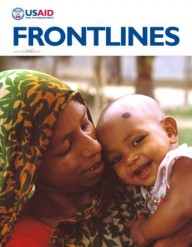

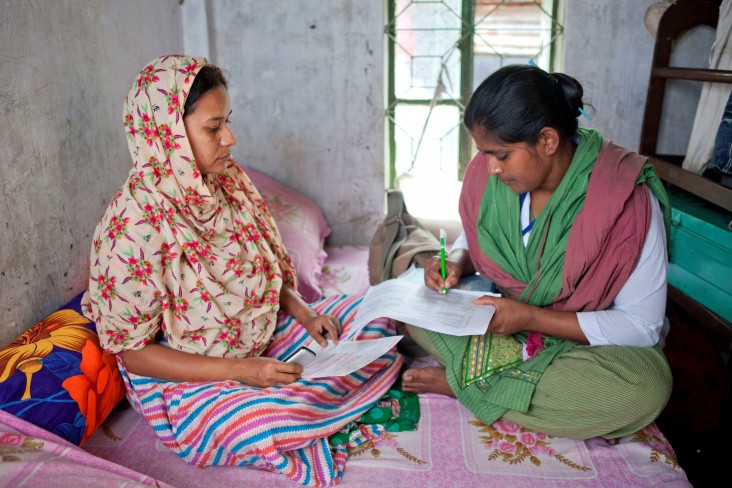
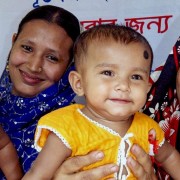
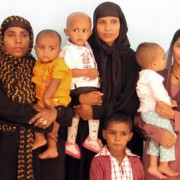
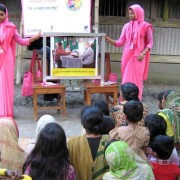
Comment
Make a general inquiry or suggest an improvement.